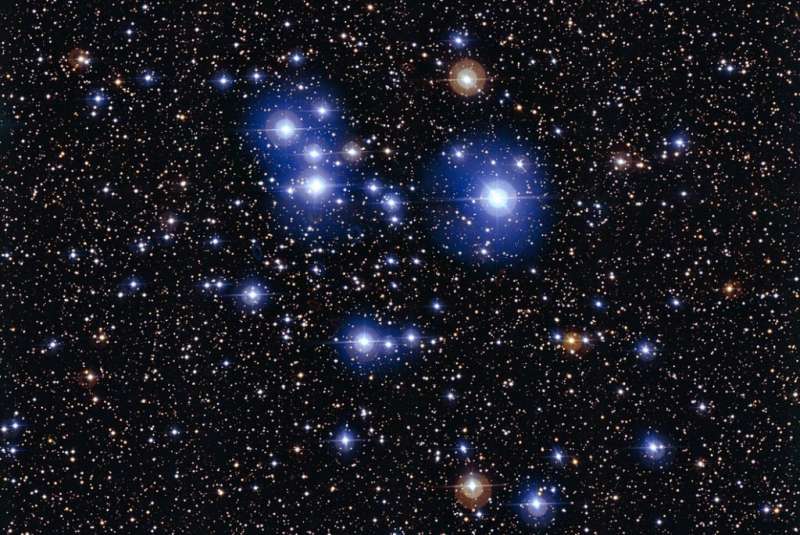This spectacular image of the star cluster Messier 47 was taken using the Wide Field Imager camera, installed on the MPG/ESO 2.2-metre telescope at ESO’s La Silla Observatory in Chile. This young open cluster is dominated by a sprinkling of brilliant blue stars but also contains a few contrasting red giant stars. Credit: ESO
All stars follow a particular path in their lives once they start fusing hydrogen. As they live they steadily get brighter and hotter until they turn to fusing other elements. Every star follows this exact same path…except the blue straggler stars.
As their names suggests, blue straggler stars are stars that appear in a cluster that are bluer and brighter than they should be. Specifically, they still lie along the main sequence, which is a specific relationship between brightness and temperature that all hydrogen-fusing stars obey. But the problem with blue stragglers is that they should definitely not be sitting on the main sequence. They should have died long ago. In fact, in the same cluster astronomers will see many other stars of similar mass that have left the main sequence and are fusing heavier elements.
Astronomers do not fully understand how blue straggler stars form. One hypothesis is that they are the leftovers of a merger of two smaller mass stars. In this scenario, the stars coalesce and merge together. Initially that merged star is huge and red, because the extreme rotation bloats it out of proportion. But after enough time that overextended star settles down, forming a massive, bright, blue star.
In another scenario, blue stragglers form when one star cannibalizes a neighbor, sucking down its mass onto its own.
Clusters are the perfect environment for these kinds of mergers to happen. Some clusters can be a million times more dense than our local solar neighborhood.
Essentially, in either model blue straggler stars get a second lease on life. They didn't form in their present state at the same time as all the other stars in the same cluster. So even though they should have died long ago based on observations of their mass, we are just now seeing them get started in a new, post-merger life.
Understanding the origins of blue straggler stars helps astronomers piece together the complicated life stories of stars themselves, and especially what can happen to them after they merge
Provided by Universe Today
























